서울에 위치한 5개의 고궁 (경복궁, 경희궁, 창덕궁, 창경궁, 덕수궁) 중 하나인 덕수궁은 조선이 풍전등화의 운명에 처한 시기에 등장하는, 시대의 아픔을 간직한 고궁입니다. 조선의 위기라 함은 바로 임진왜란과 일제강점기를 말합니다. 이러한 역사적인 배경으로 인해 덕수궁은 조선의 중세와 근대가 공존하는 특별한 경험을 할 수 있는 곳이기도 합니다.
[Deoksugung Palace, one of the five medieval old Korean palaces (Gyeongbokgung, Gyeonghuigung, Changdeokgung, Changgyeonggung, Deoksugung) located in Seoul, is the old palace that retains the pain of the times that appeared during the period when Korea was in the fate of the Japanese aggression. The crisis of Korea refers to Imjinwaeran(Japanese Invasion of Korea in 1592) and Japanese imperialism(Japanese colonial period:1910~1945). Due to this historical background, Deoksugung is also a place where the medieval and modern era of Korea can coexist.]
덕수궁은 원래 궁으로 지어진 건물이 아닙니다. 임진왜란 전까지는 월산대군의 후손들이 살던 저택이었으며 덕수궁이란 이름도 나중에 지어진 것입니다. 임진왜란에 의해 경복궁이 많이 훼손되어 임시로 왕(14대 선조)이 머물 곳이 필요하자 이곳 저택을 궁으로 사용했습니다. 이러한 내용은 2층 목조 저택인 석어당에서 쉽게 관찰할 수 있습니다. 석어당은 일반적으로 궁궐에서 볼 수 있는 지붕 및 처마 장식을 볼 수 없는데 이것은 원래 궁이 아닌 저택으로 지어졌기 때문입니다.
[Deoksugung is not a building originally built as a palace. Until the Japanese invasion in 1592, it was the residence of the descendants of royalty, and Deoksugung was later named. The Gyeongbokgung Palace was damaged by the Japanese invasion of the Imjin period. As a temporary place for the king (14 generations) to stay, he used the place as a palace. These contents can be easily observed on the second floor wooden house, Seokeodang. The Seokeodang can not usually see the roof and eaves of the palace, because it was originally built as a mansion rather than a palace.]
광해군이 즉위 후에는 창덕궁이 완공되어 거처를 옮기게 되었고 ‘나라의 운을 기린다.’는 뜻으로 ‘경운궁’으로 명했습니다. 이후 인조반정을 통해 인조가 즉위하고 그 즉위식이 경운궁에서 진행되었습니다. 인조는 창덕궁으로 거처를 옮기면서 경운궁을 원래 주인인 월산대군의 후손들에게 돌려주었습니다. 그후 경운궁은 역사의 배경에서 잠시 사라지게 됩니다.
[After the king Gwanghae was crowned, the Changdeokgung was completed and he moved to the palace. It was named as 'Gyeongungung' meaning 'to celebrate the fortune of the country.' After that, the king Injo was crowned through the ceremony was carried out in the gyeongungung palace. The king Injo moved his residence to Changdeokgung Palace and returned Gyeongungung Palace to the descendants of the previous owner. After that, Gyeongungung Palace will disappear from the background of history for a while.]
경운궁이 다시 시대의 배경으로 등장한 때는 일제가 조선 침략의 야심을 드러내기 시작한 시기입니다. 1895년 을미사변이 일어나 명성황후가 시해당합니다. 다음해인 1896년 러시아 공사관에 피신해 있던 고종(26대왕)이 경운궁으로 거처를 옮김으로써 경운궁은 조선과 대한제국을 이어주는 역사적 배경으로 등장합니다.
[When Gyeongungung Palace appeared as the background of the era, it was the time when the Japanese occupation began to reveal the ambition of the Korean invasion. In 1895, the Eulmi Incident and assassination took place, and the Empress Myeongseong was assassinated. The next year, when the king Kojong (26th King), who had fled to the Russian embassy in 1896, relocated to Gyeongungung Palace, Gyeongungung Palace appears as a historical background linking the medieval and the modern era of the Korean empire.]
1897년 고종은 대한제국을 선포, 자주국가임을 전세계에 알립니다. 또한 근대국가로의 개혁을 위해 경운궁의 영역을 확장하고 서양 건축물, 신문물을 설치했습니다. 이 당시 경운궁의 면적은 현재 시청 앞 광장을 모두 아우르는 규모로 현재 면적의 3배 정도라고 합니다. 대한제국의 대표적 서양식 건물인 석조전도 1900년에 공사가 시작되어 왕이 정무를 보는 공간이 되었습니다.
[In 1897, the king Kojong proclaimed the Korean Empire and informed the world that it is a independent nation. In addition, he expanded the area of Gyeongungung Palace and installed western buildings to reform the modern nation. At this time, the area of the gyeongungung palace now covers all the plaza in front of the city hall and is said to be three times the current area. The Seokjojeon Hall, representative western-style building of the Korean Empire, had constructed in 1910 and became a space where the king could manage the government.]
그러나 일본은 1905년 을사늑약을 강제로 체결하여 대한제국에 대한 외교권을 박탈, 실제 모든 나라의 정무를 간섭하게 됩니다. 이에 고종은 1907년 헤이그 밀사를 파견해 을사늑약의 부당함을 알리려 했습니다. 하지만 이는 세계의 관심을 받지 못하고 이 일로 인해 고종은 1907년 일제의 강압에 의해 황제의 자리에서 물러나게 됩니다. 이후 고종의 호를 태황제, 궁호를 덕수로 정한 뒤 경운궁 역시 덕수궁으로 이름이 바뀌게 됩니다.
[However, in 1905, Japan concluded the Protectorate Treaty (between Korea and Japan concluded in 1905) forcibly, depriving Korea of its diplomatic right, and actually interfering with the political affairs of the Korea. So, in 1907, the king Kojong dispatched a Hague escort to try to convey the injustice of the Protectorate Treaty. However, this did not receive the attention of the world, and due to this, the king Kojong was removed from the emperor 's seat by the coercion of Japan in 1907. Since then, the name of Gyeongungung has been changed to Deoksugung.]
1895년 을미사변을 시작으로 1919년 고종의 승하때까지 덕수궁은 역사의 중요 사건의 배경이 됩니다. 명성황후의 신주를 모신 곳은 경효전, 이곳은 1904년 경운궁 대화재로 소실되어 그 자리에 현재의 덕홍전이 세워졌습니다. 고종이 러시아 공사관에서 경운궁으로 환궁하여 대한제국을 선포하고 황제로 즉위한 곳은 즉조당입니다. 불운의 역사가 시작된 을사늑약은 중명전에서 체결되었습니다. 고종은 함녕전에서 승하합니다.
[Deoksugung Palace is the background of the important events of history until the beginning of 1895, after the Eulmi Incident and assassination, until the reign of the king Kojong in 1919. It is the place where the king Kojong declared the Korean Empire and was crowned Emperor. The Protectorate Treaty between Korea and Japan in 1905 was concluded in Jungmyeongjeon that the history of misfortune began. the king kojong ended his life at Hamnyeongjeon.]
이처럼 덕수궁은 조선말기 아픈 과거의 상처를 느낄 수 있는 고궁입니다. 비록 지금은 잘 정돈된 공원과 아늑한 분위기로 그 당시의 암울했던 시대상을 상상하기 힘들지만 유서 깊은 상징적 장소에 서있다는 것만으로도 많은 것을 생각하게 됩니다. 제가 고궁을 찾는 이유이기도 합니다.
[Thus, Deoksugung is a palace where you can feel the scars of a sick past in the end of the Joseon dynasty. Though it is hard to imagine the era of that time, because of the well-organized parks and cozy atmosphere, it is much more than just standing in a historic symbolic place. That's why I'm looking for an old palace.]
고종의 승하 이후 덕수궁은 사무실로 쓰이다가 일제에 의해 개조되어 1933년 덕수궁미술관으로 개관하게 됩니다. 또한 주변 시가지 개발로 인해 덕수궁 부지는 점점 축소되고 돈덕전이 있던 자리에는 동물원도 만들어 집니다. 1938년 석조전 서관이 완공되어 덕수궁미술관은 이왕가미술관으로 개관, 일본 근대미술품과 조선의 유물들이 전시됩니다.
[After the reign of the king Kojong, Deoksugung was used as an office, but it was renovated by Japanese rule and opened in 1933 at Deoksugung Museum of Art. In addition, due to the development of the surrounding city area, Deoksugung site is gradually reduced, and a zoo is also created in the place where Donjeokjeon was located. In 1938, the new west building of the Seokjojeon Hall was completed, and the Deoksugung Art Museum was opened as an iwangga art museum, and the remains of Japanese modern art are exhibited.]
1946년과 1947년 두 차례의 미소공동위원회가 석조전에서 열린 것을 마지막으로 덕수궁은 대한제국의 혼란한 역사적 배경에서 물러나게 됩니다. 이후 1986년까지 국립중앙박물관, 2004년까지 궁중유물전시관으로 사용되었으며 현재는 국립현대미술관의 3개의 관중 하나인 덕수궁관으로 불리고 있습니다.
[In 1946 and 1947, the Joint Committee was held at the Seokjojeon Hall. Finally, Deoksugung will be withdrawn from the chaotic historical background of the Korean Empire. Since then, it has been used as National Museum of Korea until 1986, and as a museum museum until 2004. It is now called Deoksugung Palace, one of the three of the National Museum of Contemporary Art.]
유적지 복원에 대한 국가와 대중의 관심이 증가하면서 덕수궁 역시 그 흐름에 발맞춰 복원이 이루어지고 있습니다. 예전에 창경궁이 그러했듯이 덕수궁도 원래의 전각들과 부지들이 복원되어 하루라도 빨리 예전의 모습을 갖추길 바랍니다. 경복궁처럼 크지 않아 한 번 돌아보는데 시간이 많이 걸리지 않습니다. 중앙에 위치한 분수 및 정원, 국립현대미술관 등 볼거리도 많아 연인과 함께, 또는 아이들과 함께 방문하기 좋은 곳입니다. 관람시간 또한 아침 9시부터 밤 9시까지 이므로 해가 진 뒤에 가면 또 다른 모습을 볼 수 있는 덕수궁입니다. 시간이 허락된다면 주변의 돌담길인 정동길과 2017년부터 민간에 공개된 덕수궁 돌담길을 걸어보는 것도 참 좋습니다.
[Deoksugung Palace is undergoing restoration as the national and public interest in the restoration of historical sites has increased. Just like Changgyeonggung in the past, Deoksugung should be restored to its original buildings and sites, so that it will be as old as ever. It is not as big as Gyeongbokgung Palace. It does not take much time to look around once. The fountains and gardens in the center, the National Museum of Contemporary Art and many other attractions make it a great place to visit with your love or with your children. The viewing time is from 9:00 am to 9:00 pm, so it is the Deoksugung Palace where you can see another view after the sun goes down. If time permits, it is also a good idea to walk around Jungdong-gil, which is the roundabout route around the site, and the Deoksugung stone wall path that is open to the public since 2017.
위치 : 서울 중구 세종대로 99 덕수궁
시간 : AM9~PM9
휴궁 : 매주 월요일
요금 : 1,000원 (석조전 미술관 2,000원)
해설 : 덕수궁(1시간), 석조전(45분), 중명전(35분)
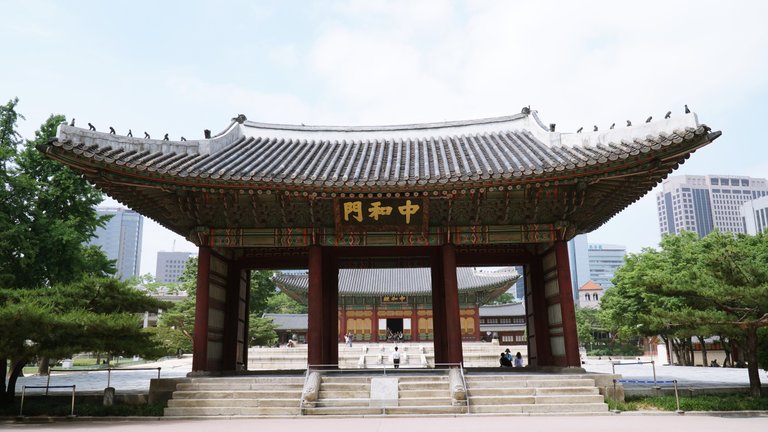
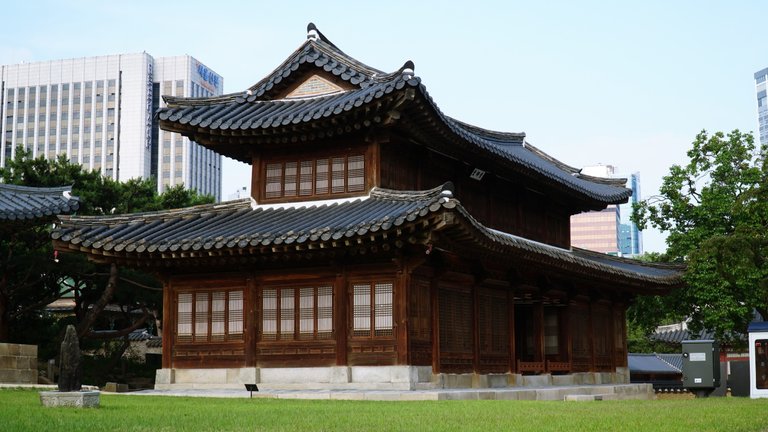
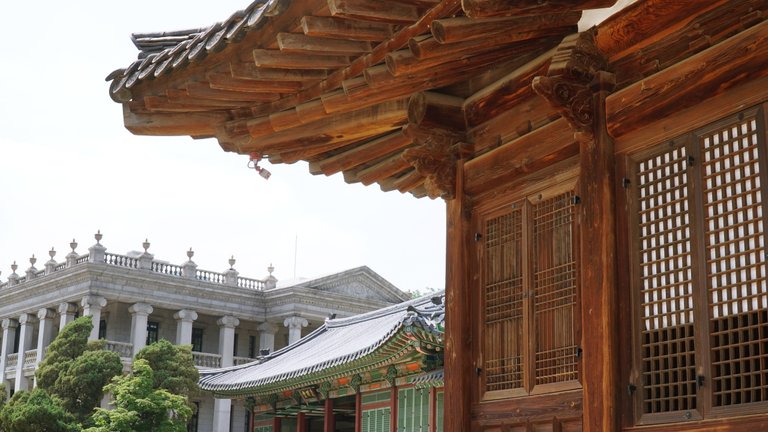
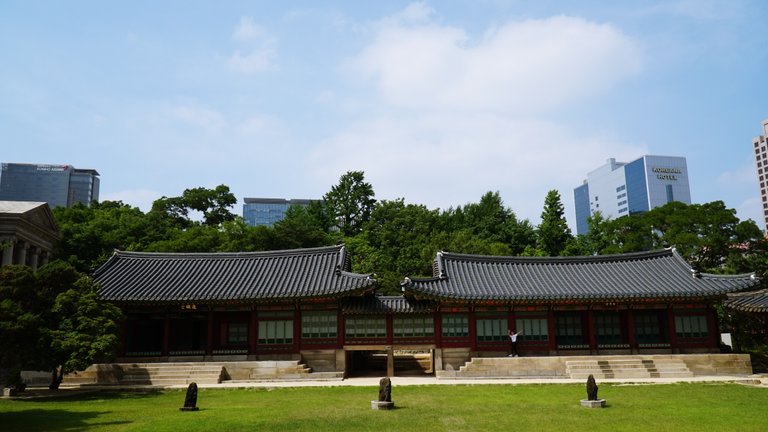
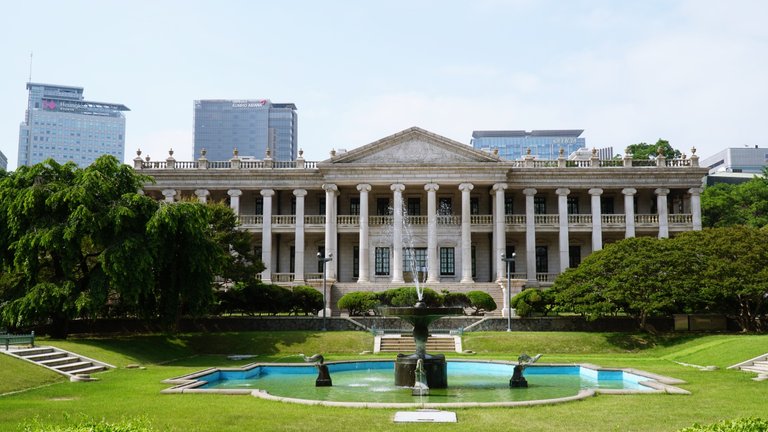
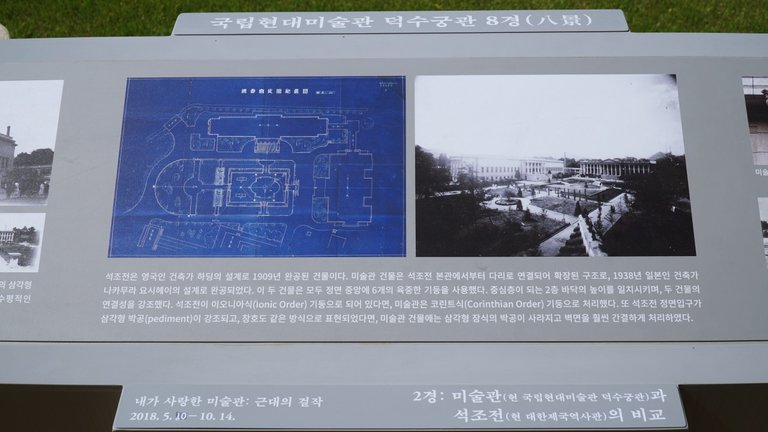
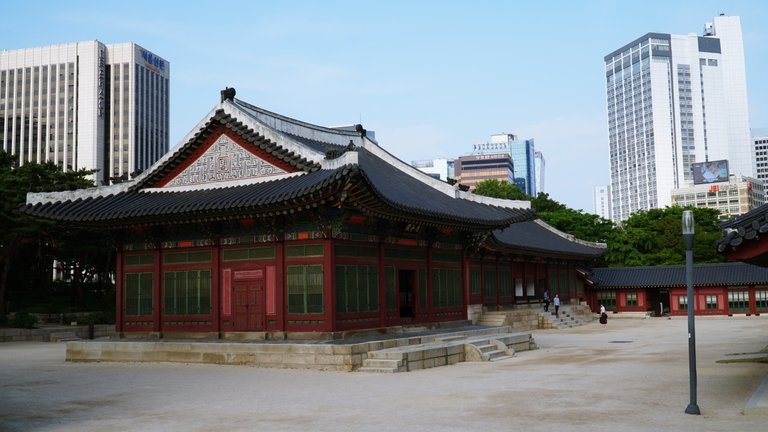
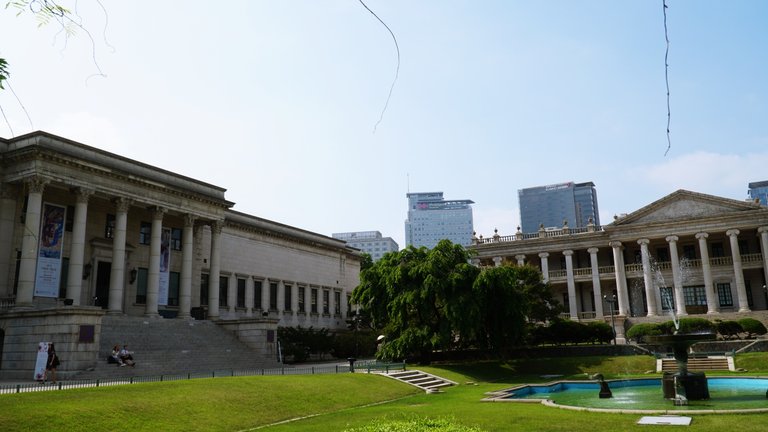
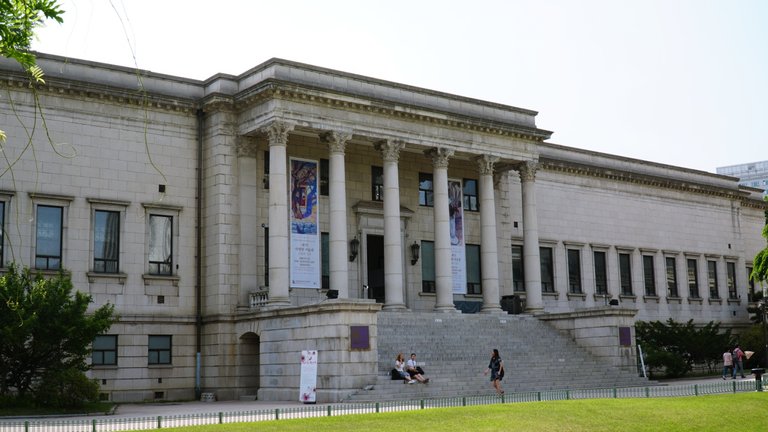

Congratulations @eastthinking! You received a personal award!
Click here to view your Board of Honor
Congratulations @eastthinking! You received a personal award!
You can view your badges on your Steem Board and compare to others on the Steem Ranking
Vote for @Steemitboard as a witness to get one more award and increased upvotes!